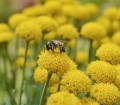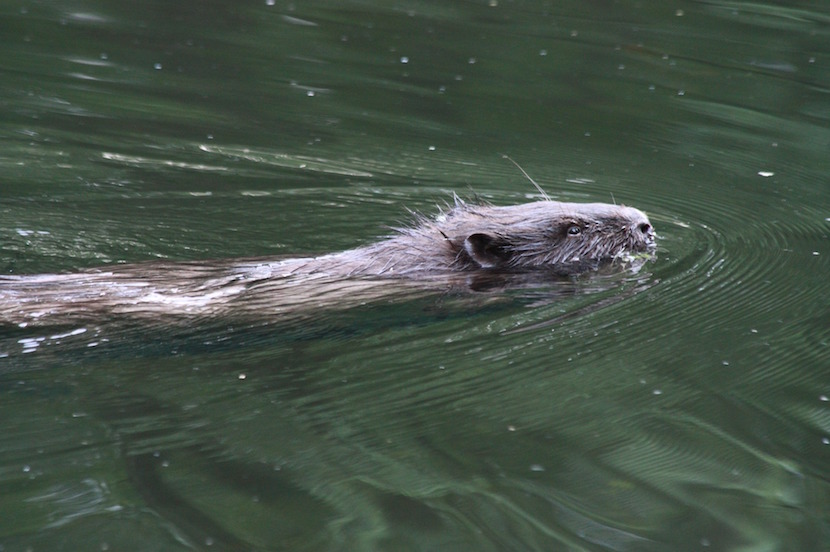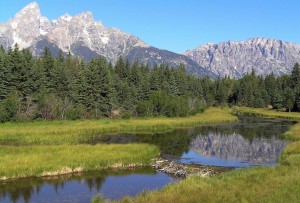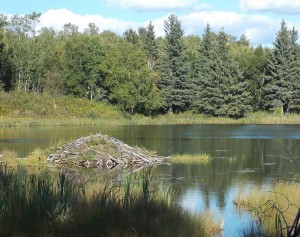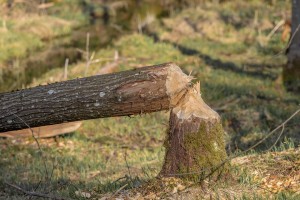The North American Beaver (Castor canadensis) also called the Canadian Beaver, American Beaver or just plain Beaver truly live up to their “Busy” nickname. The are the largest rodent in North America (second worldwide) and besides human they are the only other species that can significantly transform the landscape around them.
Beavers faced near extinction by the 20th century due to their thick and lustrous fur being highly fashionable. Luckily fashion fads come and go and the determined Beavers have made a comeback
Natural builders and engineers Beavers will use trees, twigs and mud to build dams up to six feet high across streams that will eventually flood and create a pond. To aid in the transporting of building materials the Beavers will also dig small canals so that they can simply float the wood they harvest rather than drag it through the forest. Almost all the work is done at night by the nocturnal Beavers which gives the impression that their dams have suddenly appeared. If there is one sound a Beaver hates it’s the sound of running water! Beavers will continually repair leaking dams and have even been known to stymie human construction of drainage pipes and culverts by plugging the running water overnight.
Once a pond is formed and winter approaches the Beavers will set to building their lodge to wait out the cold months in comfort and safety. A Beaver’s lodge is almost always situated in the middle of the pond to deter predators from approaching it. Further security measures include hidden underwater entrances and a spiked exterior supported by hardened mud. Inside the lodge are two main chambers, the first acts as a type of mud room where the Beaver can enter and dry off. The second chamber is the center of the home where the beavers and their young can stay warm, eat and relax through the winter. Beaver are entirely vegetarian adapted to eating plant and tree fiber. Just outside every lodge, the Beavers will stock pile an underwater larder of tree branches and shoots stuck into the mud that they can retrieve at their convenience and never be seen above water. If a Beaver is surprised while above water, it will slap its tail loudly to sounds the alarm to other and dive under water, holding its breath for up to 15 minutes or sheltering in the lodge.
Beavers faced near extinction by the 20th century due to their thick and lustrous fur being highly fashionable at the time. Luckily fashion fads come and go and the determined Beavers have made a comeback even in New York City, Chicago and Martinez California, north east of San Francisco. As the Beavers returned so did other species and it was realized what an important keystone species they are since their ponds create habitat for water fowl, fish, river otters and many other plants and animals. Beaver ponds also improve water quality as man-made and other toxins filter out and become trapped by sediment of the ponds.
So take it as a compliment if you are ever called an eager Beaver since they are diligent, crafty, hard working animals who’s efforts benefit all who are around them!

